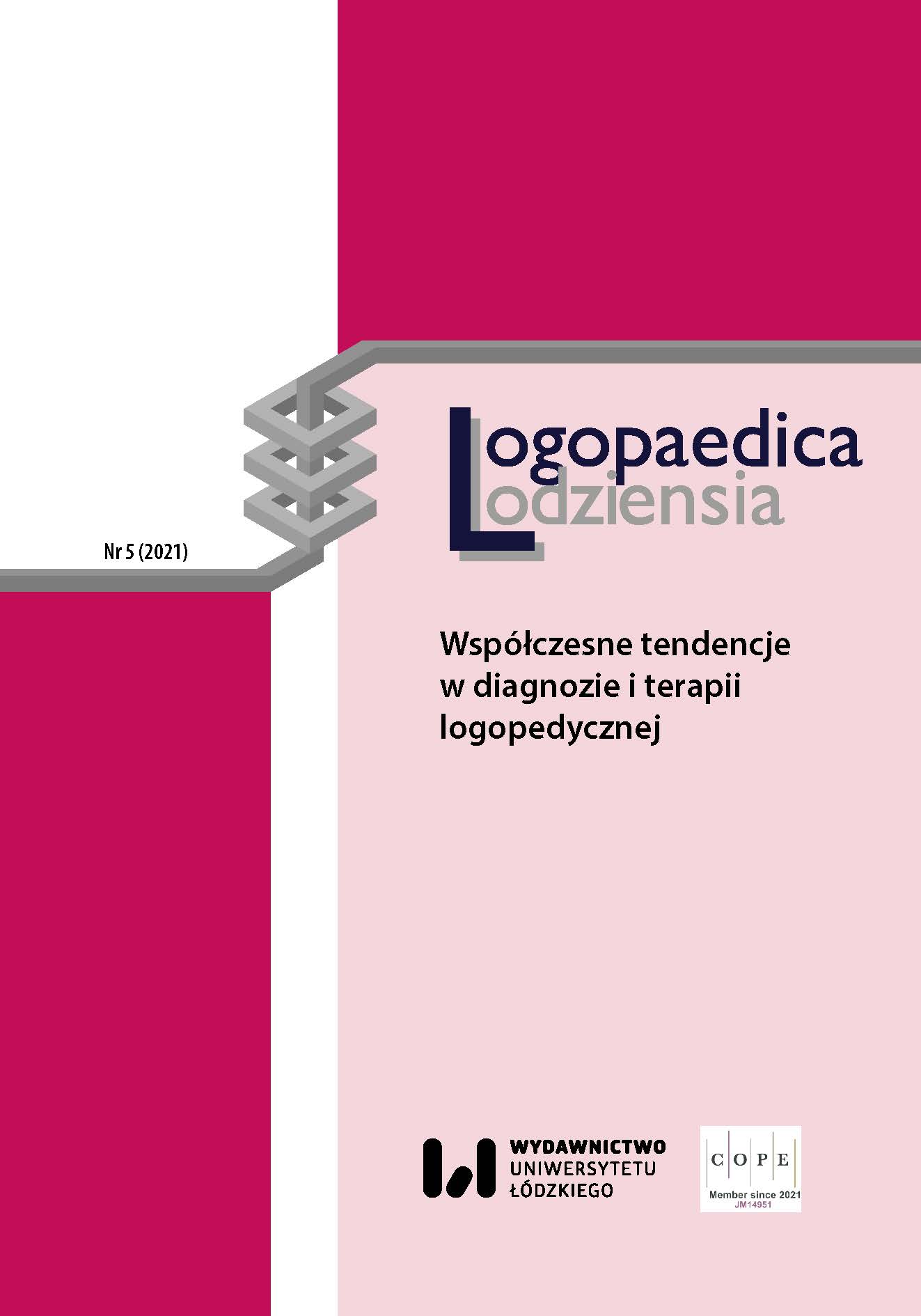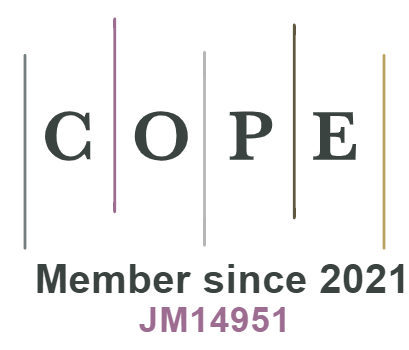Voice Disability in Teachers. Research Report
DOI:
https://doi.org/10.18778/2544-7238.05.04Keywords:
voice, voice disability, VHI, teachersAbstract
Teachers are the professional group in which voice disorders are most often diagnosed. Voice disability can develop over many years, which makes it difficult to work and function daily. Recently, there has been an increase in the number of training courses, both in the prevention of voice disorders and the disorders themselves. Research was carried out among 221 teachers to present the state of voice disability in a given population and how many of the surveyed people are under the care of a phoniatrist. The research shows that in the majority of the surveyed teachers – 173 people (78%) – the degree of voice disability was low, in 41 people (18%) average, in 6 people (3%) it did not occur, and in 1 person (1%) was large. 62% of the teachers surveyed are under the constant care of a phoniatrist. The physical sphere of the voice is the most vulnerable. Teachers abuse the voice (which can be seen at the subjective percentage price – p = 0.025) and this is the cause of voice disability. Teachers are a professional group that needs increased and continuous support in the prevention of voice disorders.
Downloads
References
Behlau M., Madazio G., Moreti F., Oliveira G., Alves dos Santos L., Paulinelli B., Couto Junior E., 2015, Efficiency and Cutoff Values of Self-Assessment Instruments on the Impact of a Voice Problem, „Journal of Voice: Official Journal of the Voice Foundation”, vol. 30, s. 110.
Google Scholar
DOI: https://doi.org/10.1016/j.jvoice.2015.05.022
Jacobson B., Johnson A., Grywalski C., Silbergleit A., Jacobson G., Benninger M., Newman C., 2016, The Voice Handicap Index (VHI): development and validation, „American Journal of Speech-Language Pathology”, no. 6, s. 66–70.
Google Scholar
DOI: https://doi.org/10.1044/1058-0360.0603.66
Malki K., Mesallam T., Farahat M., Bukhari M., Murry T., 2010, Validation and cultural modification of Arabic voice handicap index, „European Archives of Oto-Rhino-Laryngology”, vol. 267(11), s. 1743–1751.
Google Scholar
DOI: https://doi.org/10.1007/s00405-010-1296-x
Niebudek-Bogusz E., Kuzańska A., Błoch P., Domańska M., Woźnicka E., Politański P., Śliwińska-Kowalska M., 2007, Zastosowanie wskaźnika niepełnosprawności głosowej (Voice Handicap Index – VHI) w ocenie efektywnej terapii głosu u nauczycieli, „Medycyna Pracy”, nr 58(6), s. 1–9.
Google Scholar
Olszewski J., Nowosielska-Grygiel J., 2017, Nowe metody diagnostyczne oceny czynności głosu dla potrzeb foniatry i logopedy, „Logopaedica Lodziensia”, nr 1, s. 91–99.
Google Scholar
DOI: https://doi.org/10.18778/2544-7238.01.08
Pruszewicz A., Obrebowski A., Wiskirska-Woźnica B., Wojnowski W., 2003, Complex voice assessment – Polish version of the Voice Handicap Index (VHI), „Otolaryngologia Polska”, nr 58(3), s. 547–549.
Google Scholar
Rosen C., Lee A., Osborne J., Zullo T., Murry T., 2004, Development and validation of the voice handicap index-10, „Laryngoscope”, vol. 114(9), s. 1549–1556.
Google Scholar
DOI: https://doi.org/10.1097/00005537-200409000-00009
Rozporządzenie Rady Ministrów z dnia 30 lipca 2002 r. w sprawie wykazu chorób zawodowych, szczegółowych zasad postępowania w sprawach zgłaszania podejrzenia, rozpoznawania i stwierdzenia chorób zawodowych oraz podmiotów właściwych w tych sprawach (Dz.U. z 2002 r. Nr 132, poz. 1115).
Google Scholar
Rzepa M., 2010, Choroby zawodowe narządu głosu wśród nauczycieli, „Nauczyciel i Szkoła”, nr 3(48), s. 141–153.
Google Scholar
Sinkiewicz A., Garstecka A., Mackiewicz-Nartowicz H., Nawrocka L., Wojciechowska W., Szkiełkowska A., 2021, Sanatoryjna rehabilitacja głosu u nauczycieli, „Medycyna Pracy”, nr 72(4), s. 1–7.
Google Scholar
Śliwińska-Kowalska M., Niebudek-Bogusz E., 2008, Rehabilitacja zawodowych zaburzeń głosu. Poradnik dla nauczycieli, Instytut Medycyny Pracy im. Prof. J. Noffera, Łódź.
Google Scholar
Śliwińska-Kowalska M., Niebudek-Bogusz E., Fiszer M., Łoś-Spychalska T., Kotyło P., Sznurowska-Przygocka B., Modrzewska M., 2005, The prevalence and risk factors for occupational voice disorders in teachers, „Folia Phoniatrica et Logopaedica”, vol. 58(2), s. 85–101.
Google Scholar
DOI: https://doi.org/10.1159/000089610
Świątkowska B., Hanke W., Szeszenia-Dąbrowska N., 2019, Choroby zawodowe w Polsce w 2019 roku, Instytut Medycyny Pracy im. Prof. J. Noffera, Centralny Rejestr Chorób Zawodowych, Łódź 2020, http://www.imp.lodz.pl/upload/choroby_zawodowe/2020/chorobyzawodowe_2019_19.06_final_na_str_imp.pdf (dostęp: 1.01.2021).
Google Scholar
Thibeault S., Merril R., Roy N., Gray S., Smith E., 2004, Occupational risk factors associated with voice disorders among teachers, „Annals of Epidemiology”, vol. 14(10), s. 786–792.
Google Scholar
DOI: https://doi.org/10.1016/j.annepidem.2004.03.004
Downloads
Published
How to Cite
Issue
Section
License

This work is licensed under a Creative Commons Attribution-NonCommercial-NoDerivatives 4.0 International License.












